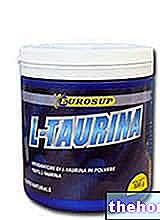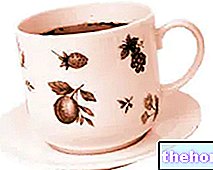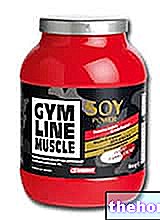See also: natural remedies for cystitis
What is the Uva ursina
The bearberry (Arctostaphylos uva-ursi - Ericaceae family) holds the scepter of the most useful natural remedy against cystitis and urinary infections in general. The drug consists of the leaves collected before flowering, then used fresh or more commonly dried.

It looks like a small evergreen shrub with creeping branches, with dark green leathery leaves; the fruits are globose, red berries, containing an acidic and floury inedible pulp.
The name uva ursina derives from the Latin uva ursi, as bears are greedy for its fruits.
Active principles and properties
The main components of bearberry - leaves are phenolic glycosides (5-15%), represented for 6-10% by arbutin and methylbutin, whose aglycones (non-sugary part) are made up of hydroquinone and methylhydroquinone molecules.
Arbutin: antibacterial activity
In the intestine, arbutin is precisely hydrolyzed to hydroquinone and glucose; after absorption, hydroquinone is conjugated mainly in the liver, then released in the urine as glucuronide and sulphate.
The bacteria present in the bladder have the ability to deconjugate hydroquinone from the glucuronide; the active principle can therefore carry out its antimicrobial action, which in vitro has proved useful against numerous bacterial strains commonly responsible for urogenital tract infections.
Other components of the phytocomplex, such as tannins and piceoside metabolites, perform a synergistic action with arbutin.

It has been postulated on how part of arbutin is absorbed unchanged in the intestine and that its glucosidic bond is then directly cleaved in the bladder with the release of hydroquinone; this hydrolysis would occur spontaneously (without the intervention of bacteria) in a basic environment, from which the need to alkalize the urine by taking sodium bicarbonate (6-8 g / day). However, there is experimental evidence on the uselessness of this practice (moreover, in general, to combat cystitis it is advisable to acidify the urine), also considering that the hydroquinones contained in the bearberry exert their antiseptic effects at their best at an acidic urinary pH. .
Like almost all supplements, there are no randomized and double-blind clinical studies in the literature to support the urinary antiseptic activity of bearberry. There is instead clinical evidence on its preventive efficacy, in addition to the support given by the inevitable findings empirical and from a thousand-year history of popular use.
How to use
The most commonly recommended preparations are the infusion, the decoction or the cold macerate (3 grams of dry drug in 150 ml of water), to be administered 4 times a day; the intake of liquids and the resulting diuretic activity perform a "washing action on the urinary tract, enhancing the antimicrobial activity of" arbutin (even if they could excessively dilute the active ingredient hydroquinone).
Certainly simpler is the assumption of capsules or tablets containing standardized extracts in arbutin, very common on the market and to be taken according to the manufacturer's instructions (generally it is advisable to take a daily quantity such as to provide 400-800 mg of hydroquinone derivatives. ). In both cases it is recommended to take it between meals.
Often in phytotherapeutic preparations, bearberry is associated with other natural remedies potentially useful in the presence of urinary tract infections, such as cranberry (fruit and juice), diuretic drugs (dandelion, grass, horsetail, goldenrod, etc. .), drugs with antispasmodic and anti-inflammatory action (chamomile), bilberry (leaves) and other Ericaceae.
Side effects
Bearberry is contraindicated in physiological conditions such as pregnancy and lactation, and in pathological conditions such as renal insufficiency and allergy to acetylsalicylic acid. It is not recommended for use under the age of 12.
Bearberry intake should not continue beyond a week (or more than five times a year) without consulting your doctor. Read the warnings on the label and do not exceed the doses specified by the manufacturer.
Bearberry tends to give urine a brown color, which darkens in the air.
The tannins, which in bearberry leaves reach important concentrations (6-7%) but still lower than those of other ericaceae, have an irritating action on the gastric mucosa; also for this reason prolonged use is not recommended (grape ursina can cause nausea and vomiting); this side effect can however be mitigated by adding a pinch of peppermint leaves to the bearberry infusion.
Video
Watch the video
- Watch the video on youtube
Select plant Fir Acacia Acerola Sorrel Yarrow Yarrow Yarrow Aconito Adatoda Garlic Agnocasto Agrimonia Alchemilla Alkekengi Aloe Altea Witch Hazel Ammi or Visnaga Pineapple Andrographis Anemone Pulsatilla Angelica Anise Star Anise Japanese Star Anise Bitter Orange Bitter Areca Arnica Harpagophytum Arpagophyte Artemisia Asteragus Basil Asparagus Asparagus Peruvian Asparagus Asparagus Asparagus Hawthorn Boldo Borage Shepherd's Purse Boswellia Bucco Butea superba Cocoa Coffee Cajeput Calamus Calamus Marigold Camedrio Chamomile Roman Chamomile Camphor Cinnamon Ceylon Maidenhair Capuchin Artichoke Cardamom Cardiac Thistle Asian Thistle Carvi Cascara Cassia Catecu Catha Cabbage Celandine Chicory Centaurea Cinnamon Cypress Celandine Chives Cypress Coca Cola Colchico Combreto Condurango Comfrey Coriander Cranberry Barberry American Chrysanthemum Cumin Turmeric Damiana Digital Dioscorea Drosera Dulcamara Dunalilella Echinacea Eder a Ephedra Elenio Eleutherococcus Helichrysum Evening primrose Horsetail Alfalfa Erica Euphrasia Erisimo Escolzia Eucalyptus Farfara Farfaraccio Calabar bean Fenugreek Fennel Phytolacca Frangola Ash Fumaria Japanese Mushrooms Galega Ganoderma lucidum Garcinia Cambogia Mulberry Gentian Broom Ginkgo Ginkgo Guipana Guipana Gynestra Ginkgo Hibelia Gymnasium Hibiscus Guarulp St. John's Wort Horse Chestnut Ispaghul Hyssop Jaborandi Kava kava Konjac Laminaria Cherry Laurel Lavender Lemongrass Lespedeza Lovage Icelandic Lichen Lemon Flax Lippia Licorice Lobelia Hops Maca Marjoram Maize Mallow Manna Marrubio Marrubio d "water Matè Melaleuca Meliloto American Lemon balm Myrtle Myrama Walnut Nutmeg Walnut vomica Olive tree Meadowsweet Ononide Opuntia Oregano Orthosiphon Nettle Poppy Papaya Parietaria Feverfew Passiflora Chilli Perilla Periwinkle Phyllanthus Plantain Picrorhiza Pilosella Pino Pisci dia Podofillo Polygala Grapefruit Parsley Psyllium Pueraria mirifica Butcher's broom Pygeum Quassia Oak Rhubarb Ratania Rauwolfia currant Castor bean Rhodiola Rosehip Rosemary Rue Willow Sarsaparilla Sage Elderberry Sassafras Sedum Ergot Senna Serenoa Repens Soybean Solidago Tansy Taraxus Tamarind Tamarind Tamarind Tamarind Tamarindo Ursina Valerian Vanilla Mullein Verbena Veronica Viburnum Vinca Pansy Mistletoe Vine Withania Yohimbe Saffron Ginger Pumpkin Select disease Juvenile Acne Rosacea Tinnitus Tinnitus Aerophagia Tendon Affections Afonia Aphthae Algias Functional Halitosis Breastfeeding Allergy Anemia Anguish Anxiety Arteriosclerosis Asthrosis Asthrosis Arthritis Arthritis Men Sex Woman Blepharitis and Conjunctivitis Eye bags Bronchitis Gallstones Kidney stones Salivary stones Baldness Androgenetic Candida Fragile hair Caries Headache Cellulitis Motion sickness Cystitis C limaterio Cholecystopathy High cholesterol Ulcerative colitis Colonoscopy Contusions Hematoma Convalescence Couperose Depression Dermatitis Diaper dermatitis Diabetes Diarrhea Erectile dysfunction Dyslipidemia Dysmenorrhea Dyspepsia Disturbances of vision Hemorrhoids Epistaxis Herethism Heart disease Fever Fibromyalgia Gastro-intestinal disease Flatulence Hypertension Fibromyalgia Gastrointomnia Jaundice Laryngitis Renal lithiasis Toothache Sore throat Thinness Menopause Meteorism Mononucleosis Alzheimer's disease Crohn's disease Nausea Vomiting Obesity Dark circles Onychomycosis Osteoporosis Dry skin Periarthritis Piorea Low pressure Prostatitis Psoriasis Colds Breast fissures Anal fissures Gastro-nasal rhinitis Senescence Premenstrual Syndrome Sinusitis Quit smoking Overweight Fatty liver Constipation Stomatitis Stress Cough Triglycerides high Ulcer Burns Nails Brittle flashes Heat Warts Dizziness Properties herbal Tanning Abortive adaptogenic Aphrodisiac bittering analgesic anesthetic anorectics analgesic antacid anti-allergic anti-asthmatic Antibiotic catarrh Anticellulitiche anticonvulsant Antidiaforetiche antidiarrheal edematous anthelmintic antiemetic Antiemorroidarie antiphlogistic Antiidrotiche Antinevrotiche Antioxidants antipyretic antirheumatic antiscorbutic Antiseptic antispasmodic anti-uric Aperitive Flavoring Astringent Balsamic Bechiche Capillarotrope Cardiotonic Carminative Cathartic Caustics Healing Cholagogues Choleretic Dyes Decongestants Deodorants Purifying Diaphoretic Cleansers Disinfectants Detoxifiers Thirst quenching Diuretics Exciting Emetics Emmenagogues Emollients Hemostatic Energies Hepatoprotectors Expectorants Eupepticus Moisturisers Galactosensitizers lanti Hypertensive Hypnotic Hypoglycemic Hypotensive Irritants Laxatives Soothing Narcotic Nerves Nutrients Odontalgic Pectoral Purgative Revulsive Remineralizing Refreshing Rubefacient Scialagoghe Sedative Soporifugas Sneezing Stomachic Stomatics Narcotic Vascular Tightenitis
















.jpg)











